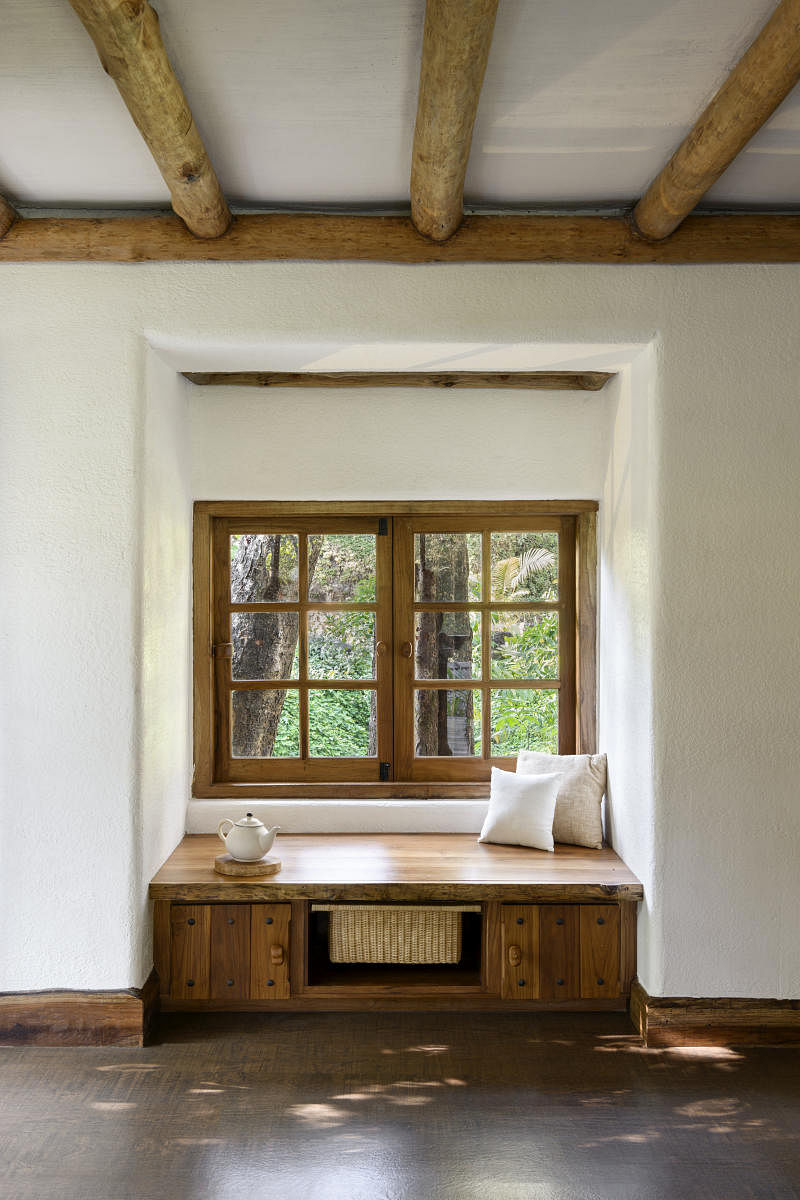

Building a new home? Architects share what to do and what not to while deciding the style, size, and placement of windows. Apart from playing a massive role functionally, when done right, they can lend a classy look to your home.
Direction matters
Since the sun rises in the east, culminates in the south, and sets in the west, the south and west are the hottest. Place your windows in the north and east as much as possible, says Khalid Rehman, principal architect, Centre for Vernacular Architecture Trust, Bengaluru.
“This is because the north gets diffused light throughout the day, and the east gets the mild early morning light that is also visually pleasing”. For example, bay windows (windows that protrude beyond the exterior wall in different shapes) are avoided in the south and west directions. Instead, they are placed in the north and east so that you can use the seater space (a feature of the bay window) comfortably to read books. The seater area can be decorated with cushions and ruffle curtains, says Nasareen AW Khan of Decfort Interior Solutions. Another interesting option is the angular bay window.
Corner windows are placed only in the northeast and northwest directions. They are rarely used in the southeast (because that would severely heat the room), “Vastu-shastra also has similar principles. The priority is to ensure good lighting, cross-ventilation, and ventilation,” notes Khalid.
Sizing is key
In places like Goa or Coorg, where you have a beautiful view outside, long windows work well says Kiran Hanumaiah, principle architect, Design Matters, Bengaluru. Long windows that are about six-feet high are key in living and dining rooms because it’s good to have a lot of light coming into these areas.
In farmhouses, windows can be longer, and in urban Bengaluru or gated communities, they should be shorter. Khalid illustrates, “If neighbourhood plots are within three to five feet, then we cannot have big windows because you will only see the wall of your neighbour. In farmhouses, then you can go big as the view is attractive.”
If you have an overhang of the roof, it comes in handy to insert a French window (these are large windows and can be used as window-cum-doors). These windows lead into a deck area, a patio, or a verandah. The sizing is also based on function. For instance, kitchen windows are smaller so the workstation is not disturbed by the window.
Clever solutions
In hot and humid places like Mangaluru, Vijayapura, or Mysuru, you always need ventilators below the roof for the hot air to vent out. In these places, big windows especially in the south and west are a big no. Even in cooler places like Bengaluru, cross ventilation is a must. Any room will have windows on opposite sides. You can have a louvre or a mesh on the top part of the window or use a dormer window (a window that projects from a sloping roof, it also illuminates the room) to let out the hot air, says Kiran.
In coastal Karnataka, you will have to add overhangs to the design to protect the windows, he advises. To create a more unique elevation, Kiran’s firm works with circular and triangular windows too. Architect Rinka D’ Monte of HomePlansIndia.com says that windows can also be tailored to the needs of the occupants.
For example, you can opt for lower windows/floor level windows in children’s rooms or houses where people who use wheelchairs live. Such inclusive designs help everybody connect with the outdoors. The architect has also worked with windows oriented at different angles to give a larger view from within the house.
Artistic touch
Earthitects have in-house craftsmen for routing the wood to beautiful shapes. Architect George E Ramapuram of the firm adds that they use upcycled wood for the knobs and windows. The hinges get their rustic look from locally sourced beaten iron. The iron rivets and handles are also locally sourced. “In traditional-themed interiors, you can have openable windows of full length, and decorate them with sheer curtains,” says Nasareen. You can also play with wooden Venetian blinds or silk curtains to enhance windows, she adds.
Blending with outdoors
Speaking about the bridge windows (designed for a Wayanad project), George says in this design, you have a bridge — a walkway that connects two levels of your house with a series of windows on both sides. So even when it’s raining, it gives you an outdoor feel. Here, it’s useful to have a fixed glass because you only want to look out, in bedrooms or a bay window, it’s best to have openable glass for the breeze. You can also have a sliding glass or a combination of both, depending on the utility.
Design challenges and adaptability
*Working out the internal layout/furniture placement
*Designing windows based on site conditions like spacing from neighbouring houses
*Letting in light and air without compromising on privacy
*These styles are not easily adaptable in existing buildings
Wallet factor
Varies from Rs 1,000 to Rs 2,500 per sq ft of window area depending on the style and materials used